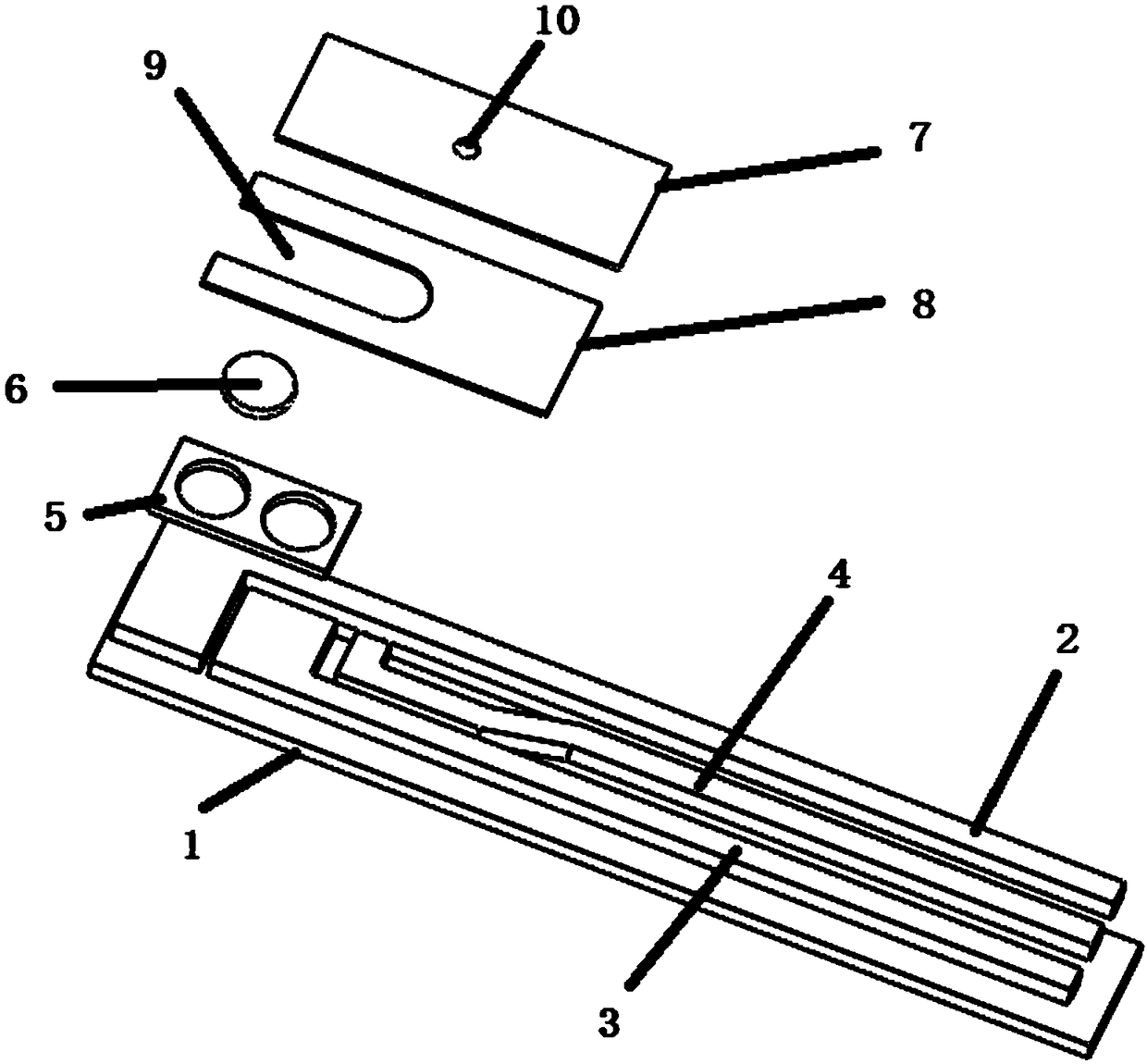Method, measuring instrument and system for detecting urine specific gravity of urine
A measuring instrument and a technology for urine specific gravity, applied in the field of urine detection, can solve the problems of low precision and complicated operation, and achieve the effect of high precision and simple operation
- Summary
- Abstract
- Description
- Claims
- Application Information
AI Technical Summary
Problems solved by technology
Method used
Image
Examples
Embodiment 1
[0099] A system for detecting specific gravity of urine, comprising an electrochemical sensor and a measuring instrument, wherein figure 1 It is a structural schematic diagram of an optional electrochemical sensor. In the figure, 1 is the substrate, 2 is the working electrode, 3 is the counter electrode, 4 is the trigger electrode, 5 is the insulating film, 6 is the reagent layer, 7 is the hydrophilic film, 8 is a double-sided adhesive layer, 9 is a sample guide groove, and 10 is an air outlet;
[0100] The surface of the substrate is screen-printed with electrode shapes, which are L-shaped working electrode 2, L-shaped counter electrode 3 and T-shaped trigger electrode 4, and the trigger electrode 4 is arranged in the space formed by the working electrode 2 and the counter electrode 3;
[0101] The L end side surface of the working electrode 2 is provided with an insulating film 5, and the insulating film 5 is provided with an opening, and the reagent layer 6 is arranged in t...
Embodiment 2
[0111] Detect urine urine specific gravity, adopt the system of embodiment 1, the reagent in the reagent layer in the sensor is as shown in table 1, and table 1 is the composition data table of reagent in the reagent layer of the present embodiment; Obtain the calculation that is set in the measuring instrument thus Formula Y=0.00148*X+0.99922; the values of parameters A and B can be determined through multiple experiments.
[0112] The reagent data sheet of table 1 embodiment 2 reagent layer
[0113] substance
mass ratio
6.45%
1.8%
Hydrophilic silica
0.9%
Tween-20
0.45%
45.2%
water
45.2%
[0114] Take 10 urine samples, numbered 1-10 respectively, apply a voltage of +0.4V to the sensor with a measuring instrument, and test the response current for 30 seconds. The above calculation formula set by the measuring instrument can directly obtain ...
Embodiment 3
[0120] The process of testing the specific gravity of urine is the same as in Example 2, except that the reagent of the sensor reagent layer is as shown in Table 3. The calculation formula in the present embodiment is obtained according to the following reagents: Y=0.00183*X+1.00162; The comparison results are shown in Table 4, Figure 5 For the present embodiment urine specific gravity and electrochemical sensor test current fitting linear diagram;
[0121] Table 3 The reagent data sheet of the sensor reagent layer of this embodiment
[0122] substance
[0123] Table 4 present embodiment obtains urine specific gravity and refractometer test urine specific gravity error data table
[0124] urine sample number
[0125] It is not difficult to understand that when the composition ratio of the reagents changes, the parameters A and B will also change accordingly. Those skilled in the art can change the composition ratio of the reagents and obtain the correspon...
PUM
 Login to View More
Login to View More Abstract
Description
Claims
Application Information
 Login to View More
Login to View More - Generate Ideas
- Intellectual Property
- Life Sciences
- Materials
- Tech Scout
- Unparalleled Data Quality
- Higher Quality Content
- 60% Fewer Hallucinations
Browse by: Latest US Patents, China's latest patents, Technical Efficacy Thesaurus, Application Domain, Technology Topic, Popular Technical Reports.
© 2025 PatSnap. All rights reserved.Legal|Privacy policy|Modern Slavery Act Transparency Statement|Sitemap|About US| Contact US: help@patsnap.com



